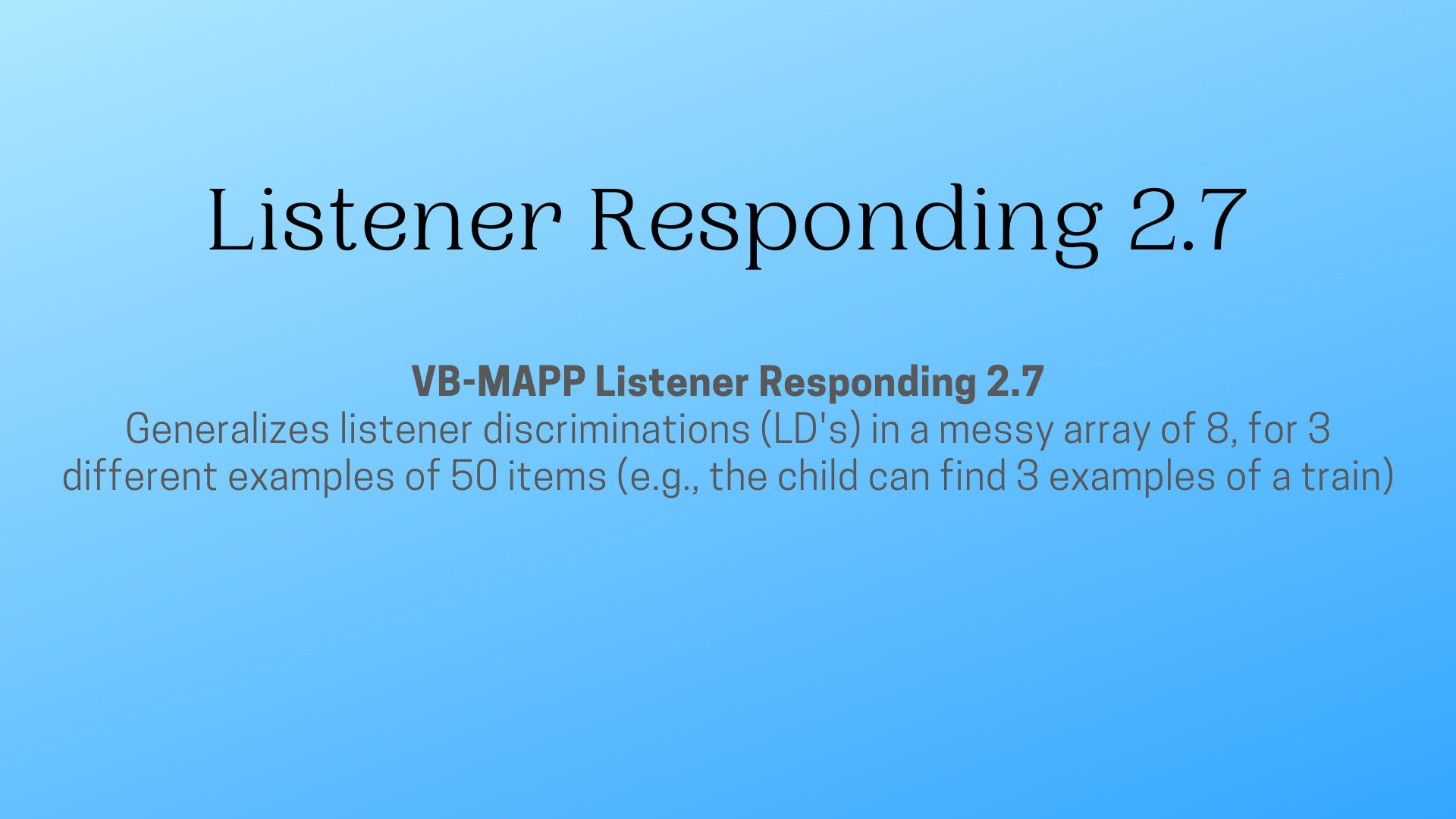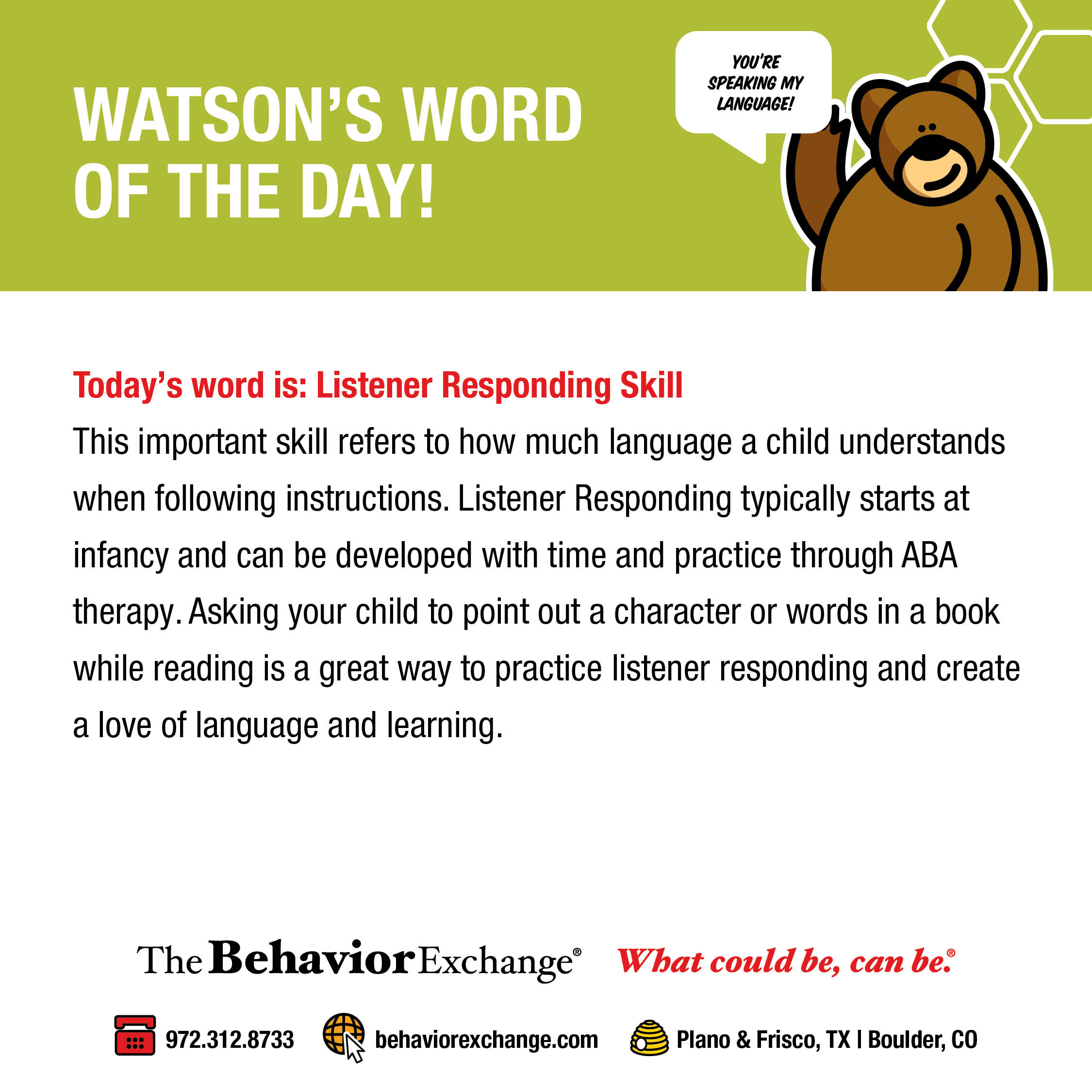
VBMAPP Task Cards Listener Responding Level 3 The Autism Helper
Receptive identification allows people to respond to the language of others and to ascertain meaning from the language spoken around us. Receptive language, or listener responding, skills are the building blocks of language development. Some children learn receptive language skills on their own while others benefit from breaking down the skills.

Test your learner's knowledge of community signs and their function
In ABA the listener and speaker are references to expansive roles that aren't bound to words that are spoken only. Verbal operants are categorized into different areas, which include mand, tact, echoic, autoclitic, and intraverbal.. Listener Responding. It's sometimes referred to as following directions. It's an indicator of how much.
Verbal Behavior ABA Noun Picture Cards for Tact and Listener Responding
Listener responding can be developed to improve a child's ability to follow instructions and engage in social interactions. By presenting clear, concise instructions and reinforcing positive reinforcement for successful responses, parents can gradually expand the child's receptive language capabilities.. ABA therapists focus on reinforcing.

Dance into the Weekend Listener Responding in ABA! YouTube
Reinforcement of Listener Behavior: Skinner also highlighted the importance of reinforcing the listener's behavior. When the speaker's verbal behavior is reinforced by the listener's attending and appropriate responses, it strengthens the listener's behavior of attending and responding to future verbal stimuli.

ABA Materials VBMAPP Listener Responding 2.7 level Two Etsy
Listener Responding (LR): The listener responds to the request of another person in the form of an action. The listener follows directions (Cooper, Heron, & Heward, 2007). Example: Someone says, "High five." You give them a high five. Motor Imitation (MI): The listener copies the movement of another individual (Cooper, Heron, & Heward, 2007).

Let's Learn ABA Listener Responding Beyond the Label
Listener Responding 11-M: explanation & scoring (Sundberg, 2008) Visit us at abasession.org to sign up for our email list to get weekly freebies! Instagram:.

Listener Responding StevensBx ABA Blog
Common Terms and Conceptualization. Most EIBI curricula and conceptual models refer to the overall repertoire of responding to another's spoken language as receptive language (Leaf & McEachin, 1999; Lovaas, 2003, Sundberg & Partington, 1998), although the term listener behavior is also used (Barbera, 2007; Skinner, 1957).The first receptive skills targeted during early intervention involve.

Listener Responding Skills Receptive Identification & ABA
The listener responding operant involves understanding and responding to spoken or written language. Developing strong listener responding skills enhances our client's ability to understand and follow instructions from others, improving their overall communication abilities.

Aba Materials VBMAPP Listener Responding Level Two 2.6 PDF Etsy
In this edition of ABA Behind the Scenes, Jami Hardy, MS, BCBA, LGPC, talks about listener responding in early language development. Listener responding is following directions given by others—for example, stand up, walk to the table, find mom, touch the chair, and pick up book. This is an important skill to discriminate between multiple items, instructions, and people.

ABA Materials VBMAPP Listener Responding 2.10 level Two Etsy
Today's word is: Listener Responding Skill. This important skill refers to how much language a child understands when following instructions. Listener Responding typically starts at infancy and can be developed with time and practice through ABA therapy.Asking your child to point out a character or words in a book while reading is a great way to practice listener responding and create a love.

ABA Materials VBMAPP Listener Responding 2.7 level Two Etsy
As ABA educators and professionals, we work in the fascinating world of behavior analysis, where language takes on a whole new dimension. While others may refer to language as labeling, requesting, or conversation, we've developed our own specialized term, known as "verbal operants.". Example of Listener Responding 6. Motor Imitation.

Listener Responding Skill Watson's Word 25 The Behavior Exchange
The mastery of listener responding not only enhances an individual's ability to understand and follow instructions but also fosters independence in various aspects of life. By targeting specific verbal operants, ABA therapy empowers individuals with ASD to develop functional language, engage in meaningful social interactions, and achieve greater independence in their daily lives.

ABA Materials VBMAPP Listener Responding 2.7 level Two (Instant
ABA Operant Education Meaning Example or Sample Goals Listener Responding Receptive language skills Focuses on the child paying attention when someone speaks, attending as an audience to the speaker, and responding to the speaker's behavior "Touch your head" and the student touches their head. "Go to the

ABA Materials VBMAPP Listener Responding 2.10 level Two Etsy
What is Listener Responding by Feature Function Class (LRFFC)? As we talk about in our blog post on VB-MAPP terminology, Listener Responding by Feature Function Class (LRFFC) is a really important skill for children to learn in their language development.It is a advanced type of listener responding behavior where a student is asked to identify an object by its associated characteristic.

ABA Materials VBMAPP Listener Responding 2.10 level Two Etsy
ABA Training Video. Listener Responding is a form of verbal behavior that requires the listener to respond to another's verbal behavior (e.g. Where is your shoes?, Get a pencil). This is also referred to as Receptive Language. In this ABA and autism video, we see examples of Listener Responding and how it can be taught to individuals with.

Digital ABA Therapy Material Cards for Listener Responding Etsy
ABA therapy is a scientifically proven approach that focuses on understanding the unique underlying behaviors of the individual. By using a data-driven approach based on each child's needs, ABA provides a structured framework to reinforce important skills through systematic interventions and lessons in the form of games and positive.